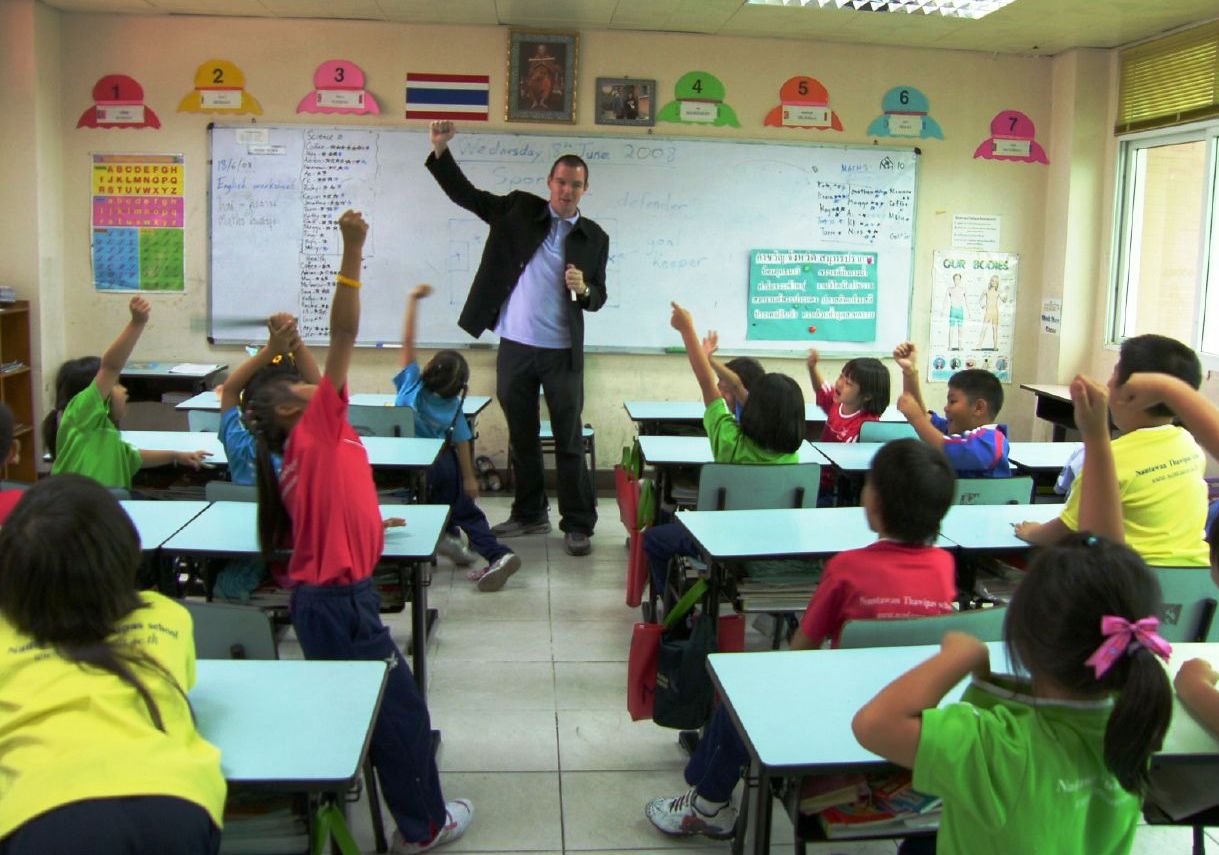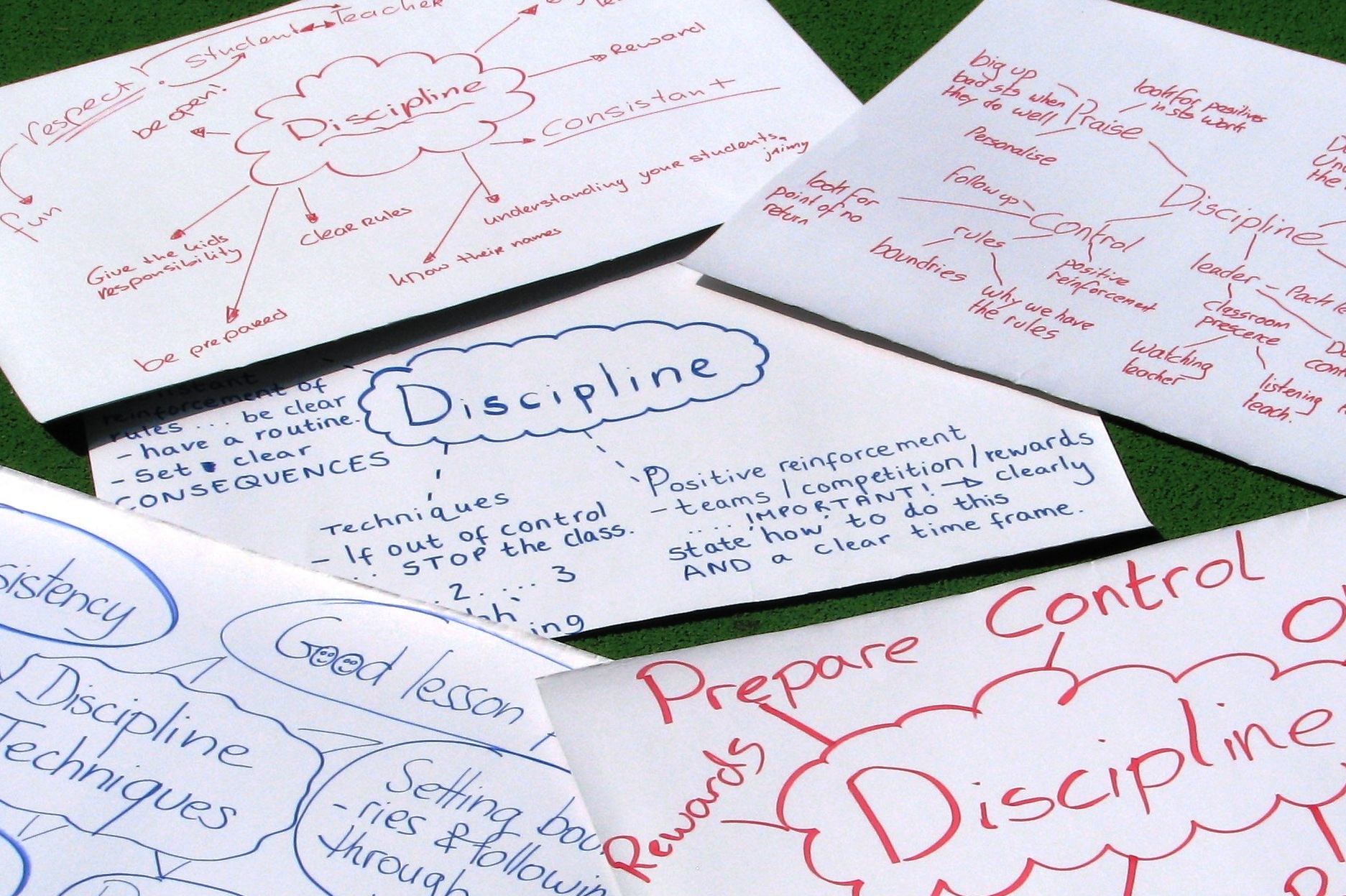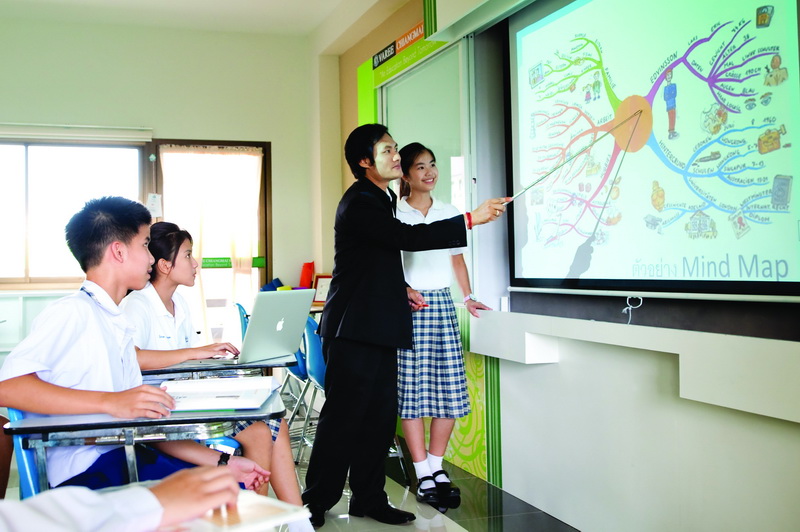The new academic year in Thailand is upon us and most Thai schools have now been open a couple of weeks. The Thai MoE requires that all students have 200 days education at school every year so if you are a teacher in a Thai school, you’ve probably got 38 weeks teaching ahead. To get the most out of your students this coming year (and to preserve what is left of your mental stability) it is well worth taking some extra time right now to work on classroom management in order to build a positive and orderly learning environment.
Educators will tell you that setting clear boundaries and expectations with your students during the early weeks of term is the easiest way of creating a well ordered classroom. Of course you can implement classroom management systems at any time … but take it from someone who has learnt the hard way, it is a lot easier to do so right from the beginning of term.

So in this blog I will be looking at a number of classroom management techniques that can help you build an orderly learning environment that promotes active learning. But I should confess now that the title to this blog is deliberately misleading – there are no ‘secrets’ to classroom management, there is no quick fix. Building a positive, well managed classroom takes time and requires patience & consistency.
Before going any further, another important point to remember is that every teacher and every class is different. What may work excellently for one class can fall flat with another. And techniques which work for one teacher often don’t succeed when employed by another.
There is a good example of this at the school where I work.
One of the Primary School Teachers adopts what I call the ‘softly spoken approach’. She waits patiently at the front of class waiting for the students to be ready. Simple but very effective and before long her students know immediately when she wants them to be quiet and pay attention. The students begin telling each other to be quite and calm down because they don’t want to disappoint their teacher.
Another Primary School Teacher uses his energy and sense of humour to control the young students. His presence in the classroom captivates the students attention and he uses his sense of humor to not only make learning enjoyable but to convey his expectations by highlighting positive and negative behavior in a well-natured manner.
When it comes to classroom management it is important to find techniques that match you, your personality and your classes.

So here are a number of points that may help with building that harmonious classroom
• Clear Consistent Boundaries
Your students are very smart. They will test you to find where the boundaries lie – they soon want to know what they can and what they cannot get away with. So it’s important for you to have a very clear picture of what you will and you wont accept in your classroom (e.g. Students putting hands up before speaking, not playing with phones, asking permission before walking about the class, arriving on time) Then you need to convey your expectations to the students. Once you have set the boundaries it is important that you stick to them.
• Body Language
Positive confident body language is such an important quality for all teachers. Think back to your days at school, remember the teachers that had trouble controlling you and your friends? How did you and your classmates know these teachers were ‘soft’? Chances are those teachers’ insecurities were picked up by the students from their body language. For examples of strong body language I suggest you watch Caesar Milan – now please don’t get me wrong .. I’m not saying teaching students and training dogs are at all similar, but I would say that confident body language is a useful trait for people working in either of these fields.
• Start each lesson with CONTROL
Start each lesson with control. I make of point of asking my secondary school students to stand up, arrange their desks neatly, put their phones away and stand silently for a 20-30 seconds before beginning the lesson. If it is a late afternoon lesson, it may take a few minutes to get a class of 30+ teenagers to calm down and get ready to study.. but think of these few minutes as an investment which will make the rest of the lesson more productive.
Furthermore, by doing this you have a point of serenity to return to later in the lesson when your students get over excited. If in contrast you start the lesson while the students are still chatting, playing with phones and joking around, you might as well throw the towel in now.
• From Strict to Relaxed
Most teachers want to be liked by their students, but being liked isn’t the most important thing, It’s better to come across a bit of a disciplinarian in the early weeks and then lighten up as the students respond to you and your expectations. This will bring you more success than trying to be everyone’s buddy and leaving the boundaries unclear. Ultimately the students will have more respect for a teacher that goes from being ‘strict’ to ‘friendly’ than a teacher that is perceived as being ‘soft’
• Positive Reinforcement
Use your students good behavior to set positive examples in your class. This helps to foster an atmosphere conducive to learning.
We as adults don’t like to be told what we’ve done wrong and what we not allowed to do… students are no different. If you spend your time pointing out mistakes and telling students what they can’t do, you’ll come across as a nagging teacher. Far better to tell the students what you like to see and then make examples of students that follow these examples, behave well and create great work. Those students will feel good about themselves and other students will follow because they want positive feedback.
This is really important with mischievous students who are often just seeking attention. When they do something well give them some praise and let their classmates know.
• Follow Up – Rewards & PunishmentsNot only are your students smart but they also have great memories so if you promise a reward for winning a competition, then make sure you give them one. Likewise if your class have been poorly behaved and you’ve told them they’re getting extra homework, make sure you give it. Otherwise they’ll see through you empty threats.
• ‘The Point of No-Return’
I’m sure there is a more intellectual term to describe this teaching phenomena but I think you’ll get what I mean… Noisy classes are often productive classes. Group work activities are a really important part of education that is too often neglected in Thai schools. When working in pairs and groups students are developing essential life skills such as creativity, communication and collaboration. But as a teacher you need to be aware of the point where a noisy productive class falls into a state of anarchy. Because when that happens it becomes really difficult to get the students back on task.
 The Secret!
The Secret!
Earlier I said their is no secret to good classroom management and I still think that’s true but if there were a secret, this point would be a credible contender despite its simplicity – Make sure your lessons are well-prepared and interesting with a range of activities to include all different types of learners.Students lose interest, disturb friend and become mischievous when they find school boring. This is your first line of defensive, a preemptive measure which acts as the foundation to a harmonious learning experience.
There’re tons of articles on the web about classroom managements but one article I recommend is this one from the Guardian which includes a lot of interesting comments from educators, some of whom have a lot to say ….
http://www.guardian.co.uk/society/joepublic/2010/feb/09/pupil-behaviour-management-tips?CMP=twt_gu